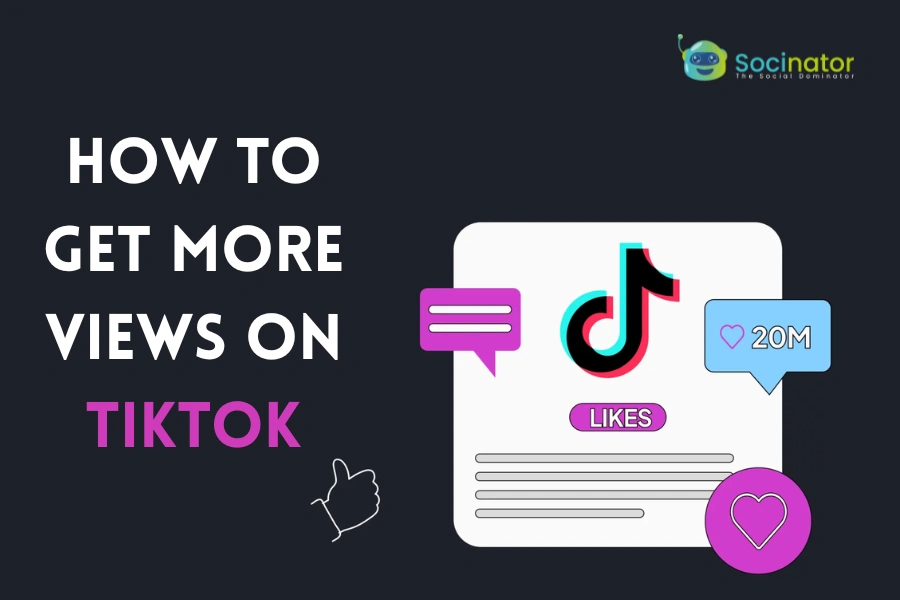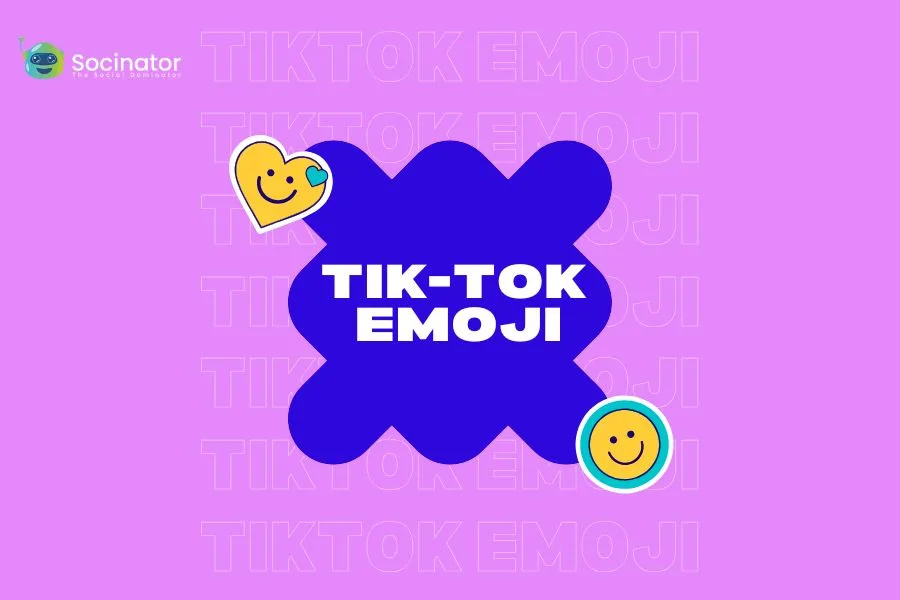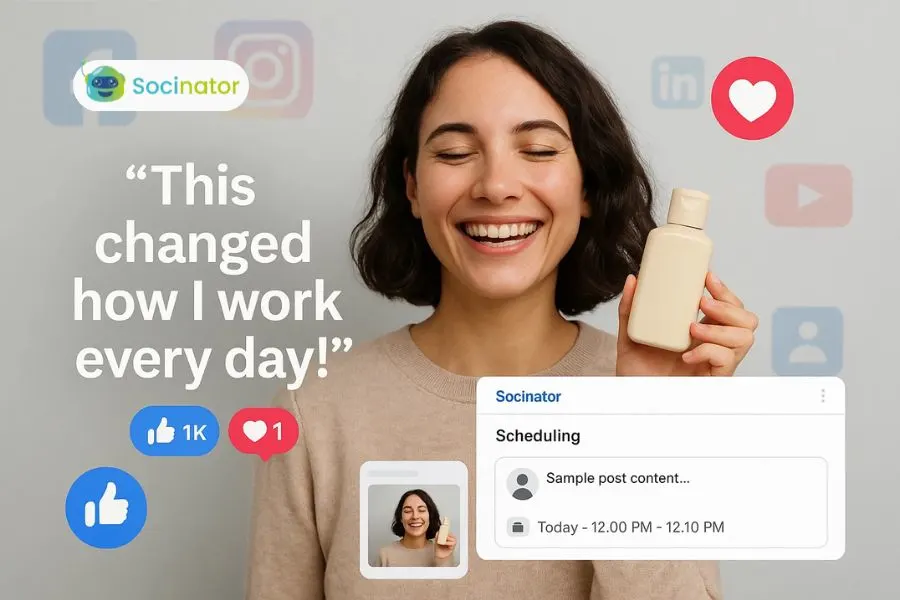From connecting with friends to finding trends and staying informed, platforms like Facebook, Instagram, and Twitter are threaded into our daily routines. With countless users actively engaging in this virtual space, social media has become a powerful tool for individuals and businesses. It’s where conversations spark, ideas spread, and brands take shape. But to understand how well your content resonates, you need to measure engagement effectively. That’s where the engagement rate comes in; it reveals the true level of interaction with your content, helping you gauge and refine your strategy.
However, while budget still plays an important role in running ads and promotions, the true expense of social media lies in the engagement rate. It is not just about how many people see your content but how many interact with it. How to calculate the Instagram engagement rate is a crucial metric, as it directly reflects how well your message is resonating with your audience. Higher engagement means your content is sparking the kind of connections that matter most.
Understanding your engagement rate is vital. It’s the heartbeat of your social media strategy, helping you measure what’s working and guiding you to create even more impactful content.
Let’s dive into how to calculate engagement rate and how it improves your social media efforts, showing why it’s a critical part of your strategy.
In a hurry? Listen to the blog instead!
What Is Engagement Rate?
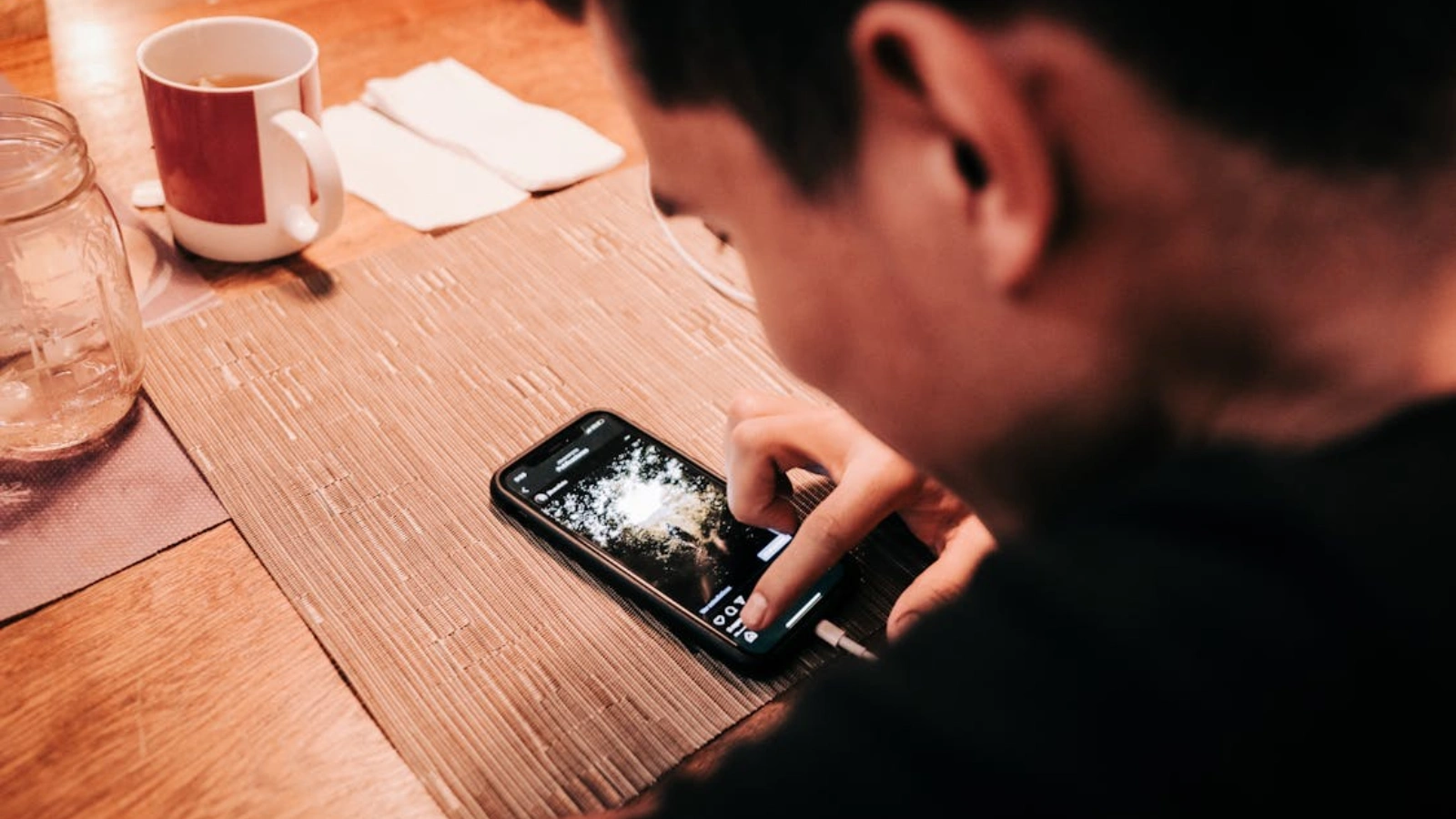 The engagement rate is a key metric that shows how actively your audience interacts with the content you share. Knowing how to calculate engagement rate goes further than just views or follower counts; it measures meaningful interactions such as likes, comments, shares, and clicks. Essentially, it’s an indicator of how much your audience values and responds to your posts.
The engagement rate is a key metric that shows how actively your audience interacts with the content you share. Knowing how to calculate engagement rate goes further than just views or follower counts; it measures meaningful interactions such as likes, comments, shares, and clicks. Essentially, it’s an indicator of how much your audience values and responds to your posts.
Put simply, engagement rate measures the level of connection between your content and your audience. The more people engage, the stronger the relationship you build with them. A high engagement rate suggests that your content resonates well, sparking conversations and encouraging users to take action. On the other hand, low engagement may signal a need to refine your strategy and create more compelling content.
Since how to calculate engagement rate directly influences visibility and algorithms on social media platforms, the more engagement a post receives, the more likely it is to appear in feeds, reach new audiences, and drive better results.
Understanding and tracking engagement rates helps shape an effective social media strategy because, ultimately, success is not just about reaching people but getting them to respond.
Why Is It Important To Calculate Your Engagement Rate On Social Media?
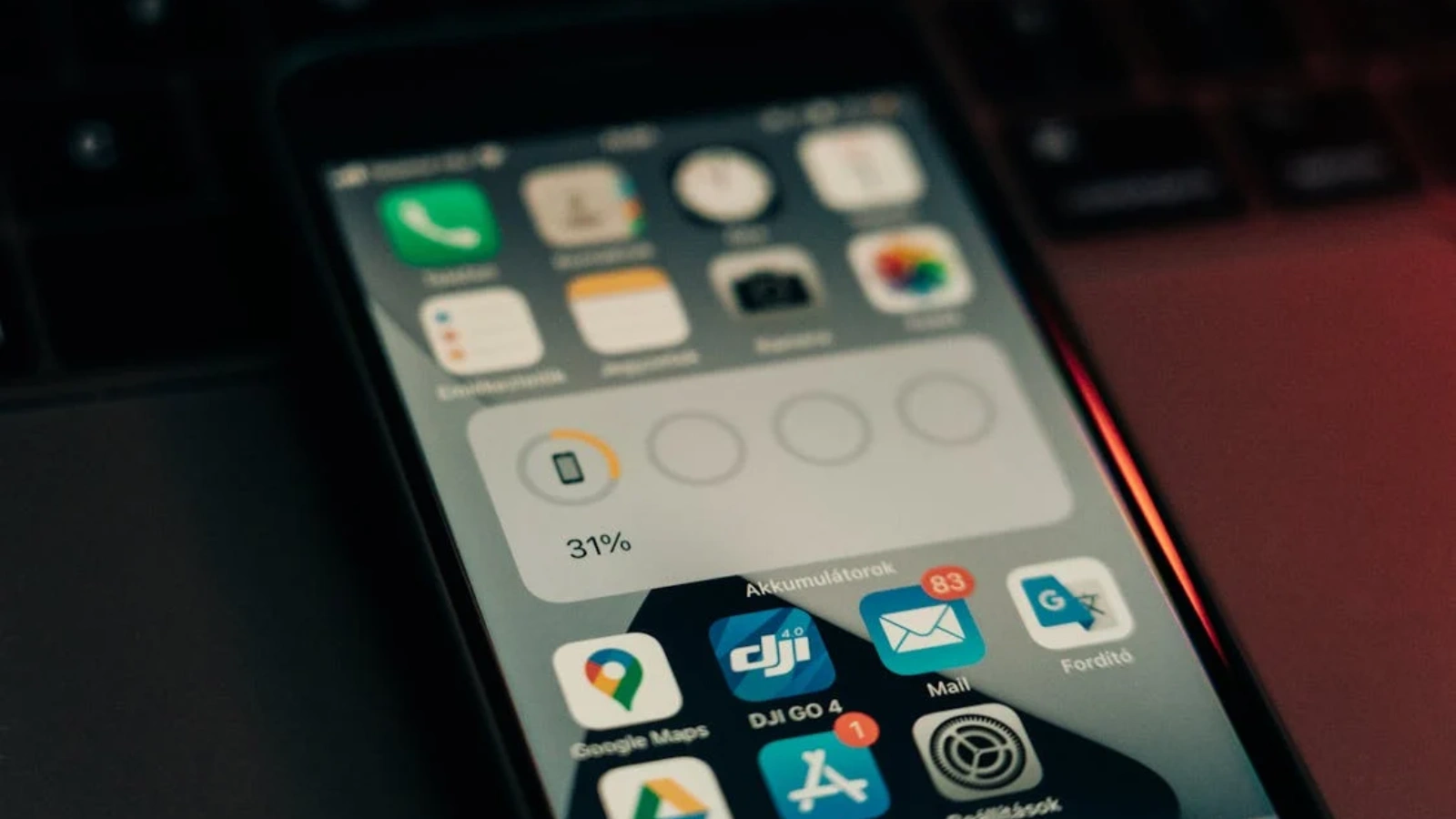 Social media thrives on interaction. It’s not just about posting content, it’s about sparking conversations, building relationships, and keeping audiences engaged. As the reference states, “Social media is meant to make people interact with the content and interact with each other.” Understanding the engagement rate formula is essential to measuring how well you’re achieving this goal and fostering meaningful connections.
Social media thrives on interaction. It’s not just about posting content, it’s about sparking conversations, building relationships, and keeping audiences engaged. As the reference states, “Social media is meant to make people interact with the content and interact with each other.” Understanding the engagement rate formula is essential to measuring how well you’re achieving this goal and fostering meaningful connections.
That’s why how to calculate engagement rate is one of the most important metrics, it shows that your content is doing what it is supposed to do: connect with people.
Tracking the engagement rate gives you a clear picture of how well your audience responds to your content. How is engagement rate calculated helps determine whether your posts are resonating and encouraging likes, comments, shares, and other interactions. A high engagement rate means your posts are resonating, while a low one suggests that something might be missing; maybe your content is not relevant, engaging, or reaching the right audience.
However, audience connection and engagement rate also affect visibility. Social media algorithms prioritize content that gets interactions, pushing it to more users.
The more engagement you receive, the more organic reach your content gains, reducing the need for paid promotions.
Calculating engagement rate is not just about numbers, it is about understanding what works, what does not, and how to calculate engagement rate. By consistently measuring engagement, you can fine-tune your content approach, ensuring that your social media presence remains strong, impactful, and truly engaging.
Also Read!
Social Media Engagement Rate – Ultimate Guide
How To Calculate Your Engagement Rate For Each Social Media Platform?
 Engagement rates are not one-size-fits-all; they vary across platforms based on how users interact with content. Knowing how to calculate engagement rate is crucial, as likes, comments, and shares may be the primary engagement metrics on one platform, while other factors like saves, retweets, or watch time might carry more weight elsewhere.
Engagement rates are not one-size-fits-all; they vary across platforms based on how users interact with content. Knowing how to calculate engagement rate is crucial, as likes, comments, and shares may be the primary engagement metrics on one platform, while other factors like saves, retweets, or watch time might carry more weight elsewhere.
That’s why calculating the engagement rate correctly for each platform is important to understanding how well your content performs.
Each social media platform has its way of measuring interactions, and using the right formula provides an accurate assessment of your audience’s responsiveness.
In the next sections, we will break down the specific engagement rate calculation formulas for different platforms, helping you track performance effectively and refine your social media strategy.
Platform-Specific Engagement Rate Calculations
 Each social media platform has a unique way of measuring engagement, depending on how users interact with content. Knowing how to calculate engagement rate and understanding the right formula for each platform is crucial for accurately assessing your social media performance.
Each social media platform has a unique way of measuring engagement, depending on how users interact with content. Knowing how to calculate engagement rate and understanding the right formula for each platform is crucial for accurately assessing your social media performance.
Below are the engagement rate calculations for major social media platforms and how they can be applied effectively.
Engagement on Facebook includes reactions, comments, and shares. Since Facebook allows content to reach users outside your followers through shares and algorithm-driven recommendations, measuring engagement based on reach or impressions gives a more accurate picture of performance.
By tracking engagement over time and evaluating various types of content, you can pinpoint what truly resonates with your audience. Understanding how to calculate engagement rate for posts with high interaction is key, as these often perform better in Facebook’s algorithm, boosting visibility.
Formula: Engagement Rate (%) = (Total Interactions ÷ Total Impressions or Audience Reach) × 100
Calculating how to work out engagement rate this way provides a more comprehensive understanding of how well your content performs with a broader audience, outside just your direct followers. Higher engagement typically indicates that your content is appealing and drives interaction, helping your post gain more visibility across users’ feeds and search results.
Instagram engagement includes likes, comments, shares, and saves. Since Instagram’s algorithm prioritizes engagement, understanding how to calculate engagement rate for posts with higher interaction rates is crucial, as these are more likely to appear on users’ feeds and the Explore page. Unlike Facebook, the Instagram engagement is typically calculated using followers instead of impressions.
A higher engagement rate suggests that your content resonates with your audience, encouraging interactions that drive visibility and growth. By using an Instagram automation tool like Socinator, you can streamline engagement tracking and enhance the effectiveness of your strategy.
Formula: Engagement Rate (%) = (Total Interactions ÷ Overall Followers) × 100
This method helps you consider how well your content resonates with your actual audience rather than just reaching a broad group. It is essential to remember that an active follower base will significantly impact how to calculate engagement rate on Instagram, which also correlates to Instagram’s algorithm favoring your posts, allowing them to be shown to a larger audience.
Twitter (X)
Twitter engagement consists of retweets, hashtags, likes, and comments. Since tweets appear in users’ feeds based on interactions and algorithmic recommendations, tracking engagement rates based on impressions provides a clearer understanding of performance.
To improve engagement, brands should create content that encourages discussions, retweets, and interactions to boost visibility.
Formula: Engagement Rate (%) = (Total Interactions ÷ Overall Impressions) × 100
Tracking engagement based on impressions helps you understand how content performs among a broad audience, not just your followers. Knowing how to calculate engagement rate for impressions gives you insights into how much attention your tweet receives beyond your direct network, which is particularly valuable for content aiming to go viral or reach new audiences.
On LinkedIn, engagement includes reposts, likes, comments, and shares. Since LinkedIn is a professional networking platform, engagement is often driven by industry-related discussions, thought leadership, and networking. Higher engagement on LinkedIn can enhance content reach, helping posts appear in more users’ feeds through algorithmic recommendations.
Formula: Engagement Rate (%) = (Total Interactions ÷ Total Impressions) × 100
This calculation allows you to track how well your professional content resonates within your network. Knowing how to calculate engagement rate on LinkedIn can help enhance visibility among professionals and increase post interactions, whether they are from connections or other industry players, as LinkedIn has a different focus compared to other platforms.
YouTube
YouTube engagement is determined by views, likes, dislikes, subscriber comments, and shares. Since video content is the primary medium on YouTube, engagement is typically measured relative to total views rather than subscribers. Monitoring the engagement rate helps creators understand what type of content keeps viewers engaged and encourages interactions.
Formula: Engagement Rate (%) = (Total Interactions ÷ Total Views) × 100
By using total views as the denominator, you get a clearer picture of how your audience is engaging with your videos. Understanding how to calculate engagement rate for YouTube helps creators identify which videos attract the most interaction, allowing them to replicate this success in future content and refine their video strategies for better engagement.
TikTok
Since the TikTok algorithm heavily favors engagement, a high engagement rate can significantly boost content reach and virality. Engagement is typically calculated based on the number of followers. A strong engagement rate indicates that content resonates well with the audience, increasing the chances of appearing on more users’ For You pages.
Formula: Engagement Rate (%) = (Total Interactions ÷ Total Followers) × 100
TikTok is highly dependent on how content resonates with users. By tracking engagement based on followers, this calculation highlights whether your content maintains a high level of interest from your audience, influencing the chances of your video appearing on more users’ For You pages and increasing its reach.
Each platform has unique engagement characteristics, and understanding how to calculate engagement rate for each helps tailor content strategies for maximum interaction and visibility. Consistently tracking engagement can reveal valuable insights into audience preferences, helping refine future content for better performance.
How To Use Engagement Rates In Your Social Media Strategy?
 Social media engagement rate is the most valuable insights you can gather when refining your strategy.
Social media engagement rate is the most valuable insights you can gather when refining your strategy.
By analyzing engagement metrics, you can identify which types of content resonate most with your audience on each platform.
Whether it’s video posts, images, or written content, tracking engagement allows you to understand your audience’s preferences and adjust accordingly.
To use engagement rate data effectively, first assess the success of your campaigns. If a particular post or campaign garners high engagement, it shows that your content is striking a chord with your audience.
This information helps you replicate successful strategies in future posts, ensuring consistent growth in engagement. On the other hand, if engagement is lower than expected, it may indicate that adjustments are needed. How to calculate engagement rate, track the relevant metrics, assess performance, and refine your content accordingly for better results.
Platform-specific engagement patterns are also important. Each social media platform has its nuances in how users engage with content.
By monitoring engagement rates on each platform, you can tailor your approach to fit the unique dynamics of each. For example, posts that perform well on Instagram Metrics might not necessarily yield the same results on LinkedIn.
As stated in the reference, “Knowing your engagement rate on each platform you have a presence on is only half of the equation; now it’s time to make use of these numbers in your overall marketing strategy.”
Use your engagement data to refine your content and improve social media performance. Understanding how to calculate engagement rate helps you create targeted strategies that resonate with your audience. AI tools like Socinator automate tracking and offer insights, enabling quick, data-driven decisions to optimize your social media strategy.
How Socinator Helps Optimize Social Media Performance?
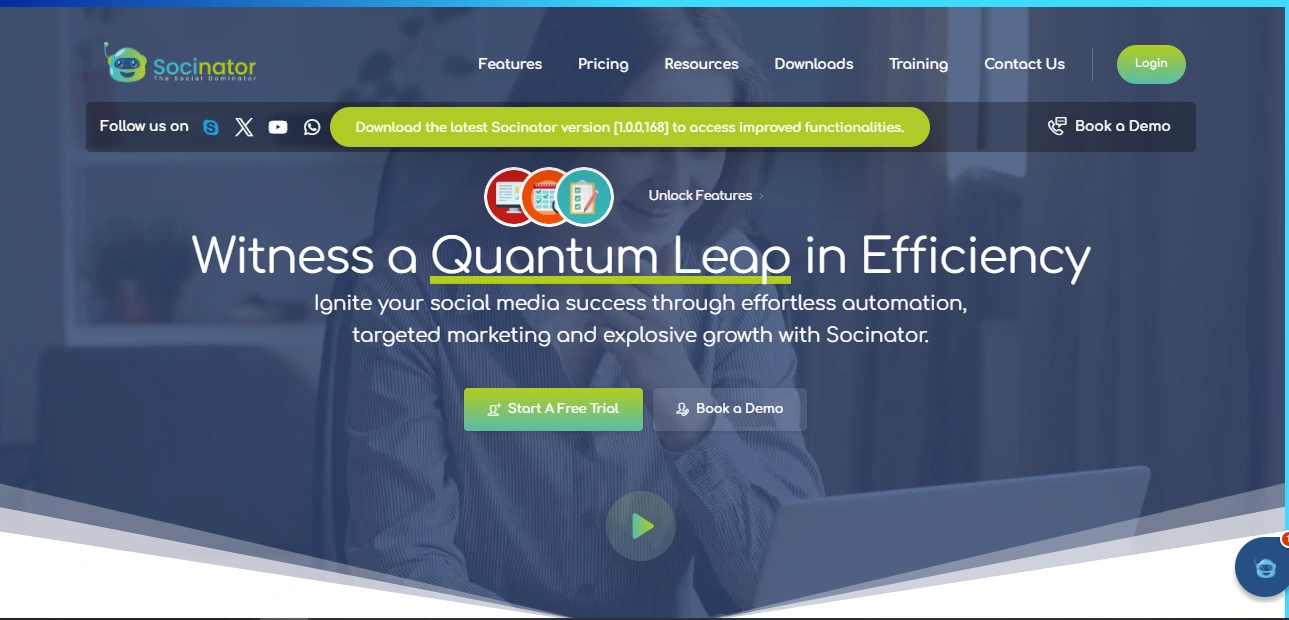 Socinator is an all-in-one social media automation tool that helps businesses streamline their social media management while optimizing engagement strategies. By automating engagement rate calculations, Socinator allows you to focus on content creation and community engagement rather than manually tracking every interaction. The platform’s powerful features also include post-scheduling, content management, and analytics tracking.
Socinator is an all-in-one social media automation tool that helps businesses streamline their social media management while optimizing engagement strategies. By automating engagement rate calculations, Socinator allows you to focus on content creation and community engagement rather than manually tracking every interaction. The platform’s powerful features also include post-scheduling, content management, and analytics tracking.
One of Socinator’s standout features is its ability to track engagement rate across multiple platforms, providing valuable insights into how your audience interacts with your content. This data can be used to refine your content strategy and optimize your posts for better reach and interaction.
Moreover, Socinator offers engagement optimization tools that help enhance your social media presence, making it easier to grow and maintain an active, engaged community. With its user-friendly interface and comprehensive features, Socinator empowers businesses to improve their social media strategy and achieve long-term success.
Conclusion
Tracking how to calculate engagement rate is important for a social media strategy. By calculating and analyzing engagement, you can better understand your audience, refine your content, and tailor your campaigns for greater impact. Use the formulas shared throughout this guide to assess your performance and make data-driven decisions. For a more efficient approach, consider trying out Socinator, a powerful Instagram marketing automation tool designed to streamline engagement tracking and optimize your social media efforts. Start leveraging Socinator today and elevate your social media strategy to the next level!
FAQs On How To Calculate Engagement Rate For Social Media Growth
Why does the engagement rate matter on social media?
The engagement rate shows how well your audience connects with your content. It’s not just about how many people see your posts but how many interact—like, comment, share, or click. A strong engagement rate means your content is sparking interest and conversations, which can boost visibility and help grow your audience.
How do you measure engagement rate?
The formula varies depending on the platform, but in general, how to calculate engagement rate involves dividing total interactions (likes, comments, shares, etc.) by the total number of followers or Impressions, then multiplying by 100 to express it as a percentage. This tells you what percentage of people who saw your content engaged with it.
Which platforms use engagement rate as a key metric?
Almost all major social platforms—Facebook, Instagram, Twitter, LinkedIn, TikTok, and YouTube—track engagement in some form. Knowing how to calculate the engagement rate for each one helps you understand where your content is performing best and where you might need to tweak your approach.
Is a higher engagement rate always better?
Generally, yes! A higher engagement rate indicates that your audience is actively connecting with your content. But it’s also important to look at the quality of engagement. Are people just liking your posts, or are they commenting and sharing? Meaningful interactions are what truly matter.




